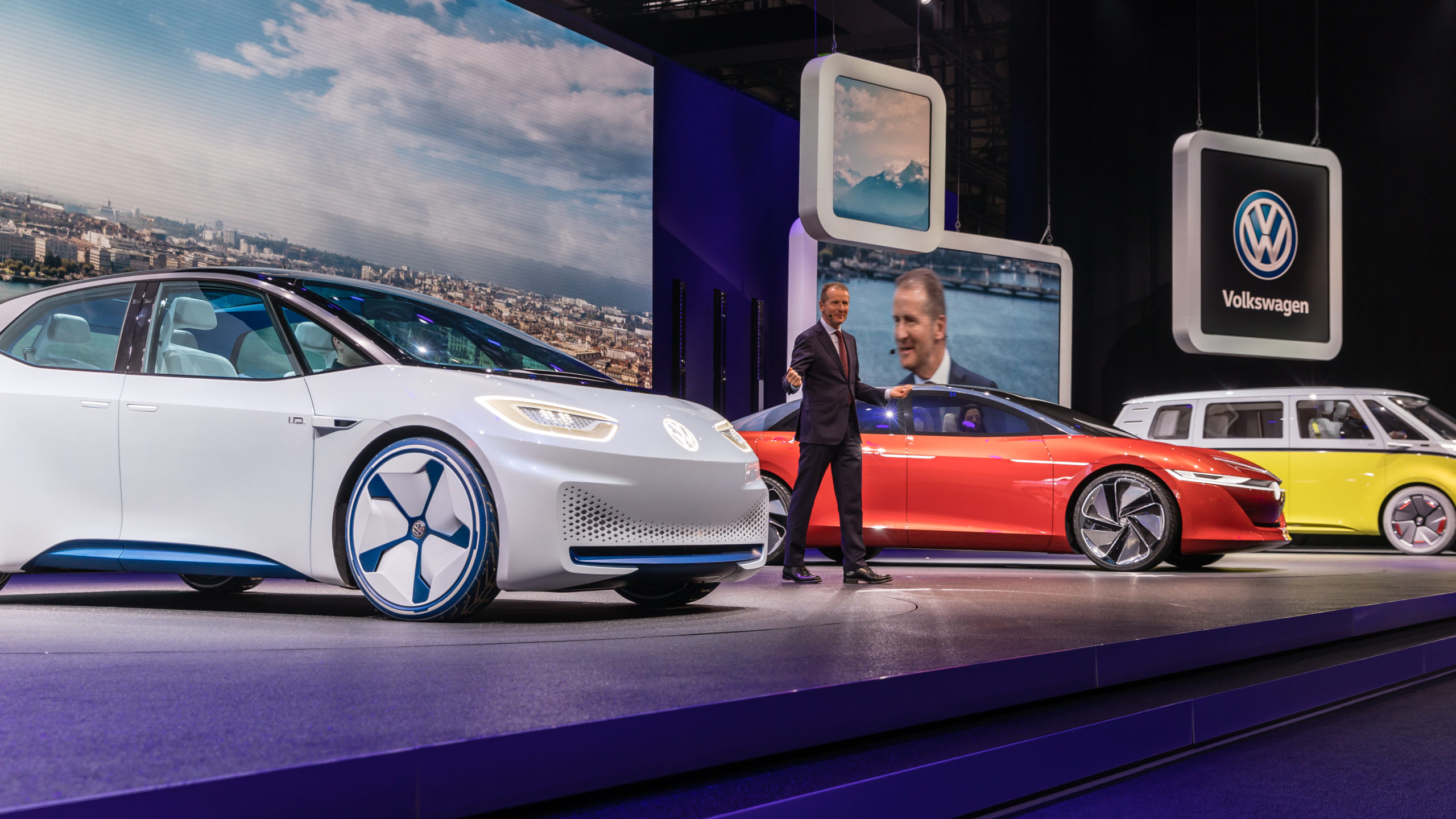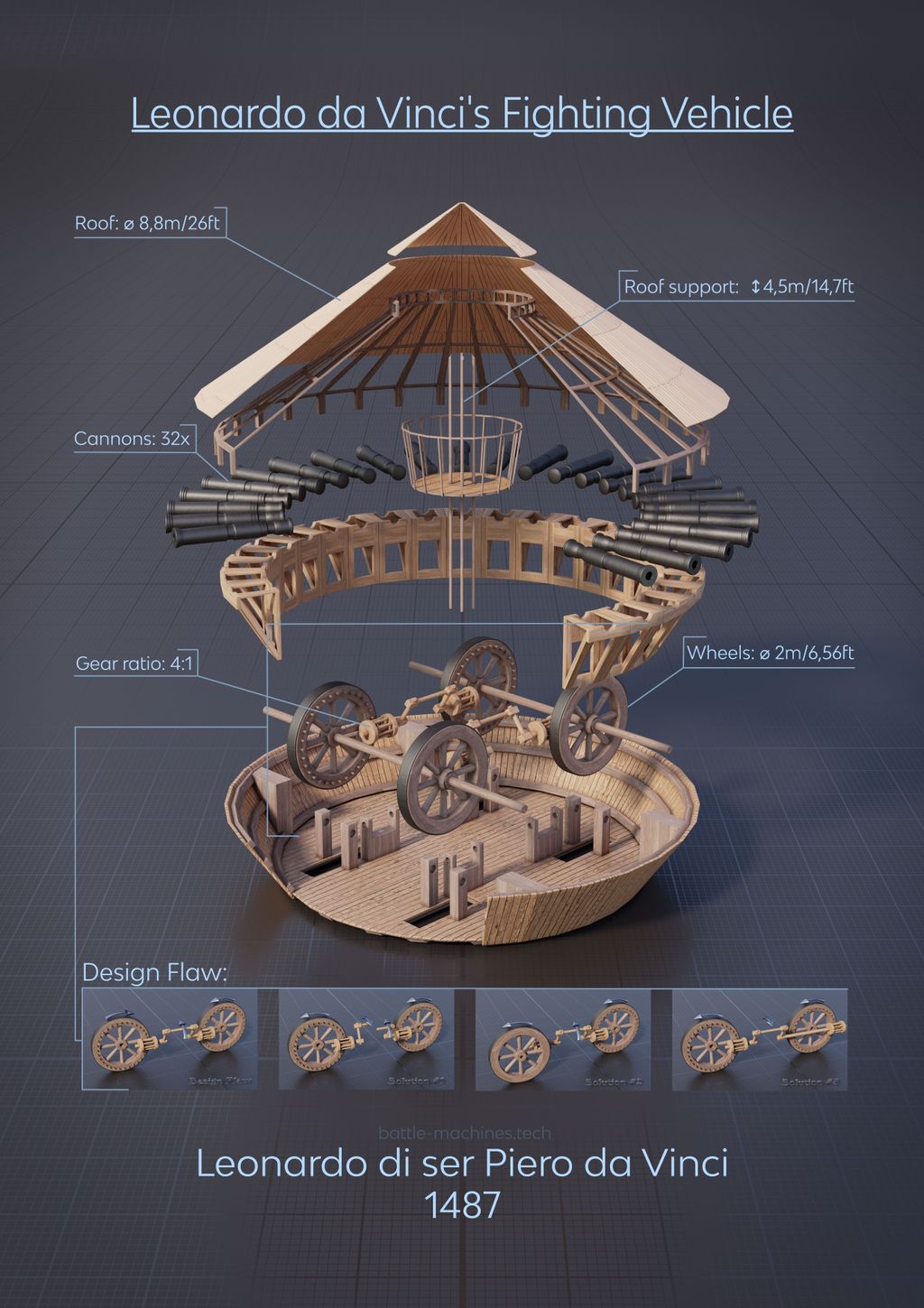
In the dynamic landscape of sport utility vehicles, where choices abound and consumer preferences vary widely, a critical factor often overlooked until it becomes a catastrophic problem is long-term reliability. While initial appeals often focus on interior space, ride comfort, or advanced features, the underlying durability of a vehicle’s core components dictates true value over time. Foremost among these components is the transmission, a system whose failure can transform a convenient mode of transport into an unexpected and substantial financial burden for any owner.
A transmission problem is notoriously costly, frequently leading to repair bills that run into thousands of dollars. Whether dealing with a conventional automatic, a complex dual-clutch, or a continuously variable transmission, failures can involve worn parts, fluid leaks, electronic malfunctions, or even the complete replacement of an assembly. These expenses are compounded by high labor rates and the specialist nature of such repairs, making a robust transmission system an undeniable priority for any savvy SUV buyer. Understanding this, consumers seek vehicles known for their steadfast mechanical integrity, promising trouble-free operation long after the initial warranty expires.
This comprehensive article aims to equip you with essential knowledge, illuminating the characteristics of truly reliable transmissions and spotlighting fourteen exceptional SUVs that have consistently demonstrated superior durability. These models stand out for their engineered resistance to the common transmission failures that plague other vehicles, offering owners enduring peace of mind across hundreds of thousands of miles. By exploring their unique strengths and design philosophies, we empower you to make an informed decision for an SUV built to last. Let’s begin our journey by examining the first seven of these highly dependable vehicles.

1. **Toyota 4Runner: Enduring Simplicity for Rugged Reliability**The Toyota 4Runner is celebrated for its straightforward construction and robust components, a design ethos that underpins its exceptional transmission reliability. Its four- or five-speed automatic transmissions, depending on the model year, avoid excessive complexity, featuring fewer intricate clutch packs or advanced electronics. This deliberate simplicity inherently reduces potential failure points, contributing to a stellar record of high mileage achieved by owners with minimal transmission issues, particularly when routine maintenance is consistently upheld.
Key to the 4Runner’s resilience are its highly durable torque converter and strong planetary gear sets, foundational elements engineered to endure significant stress. A generously sized cooling system for the transmission further bolsters its performance, especially under demanding conditions like towing or arduous off-road excursions where heat and load stress components. Toyota’s commitment to quality also extends to its use of superior fluids, reliable seals, and robust internal filter designs, with engineers prioritizing safety margins over minimal cost or weight.
This conservative engineering ensures the 4Runner’s transmission resists overheating, slippage, and premature wear on clutch surfaces, even in harsh environments. While minor issues like solenoid replacements or seal leaks can occur, they are infrequent and rarely escalate to catastrophic costs. The widespread availability of parts and a knowledgeable service network also contribute to affordable repairs, making the 4Runner a standout choice for long-term, trouble-free gear shifting that maintains strong resale values.
Car Model Information: 2019 Toyota 4Runner SR5
Name: Toyota 4Runner
Caption: 2025 Toyota 4Runner TRD Sport (N500)
Manufacturer: Toyota
Aka: Toyota Hilux Surf (Japan, 1983–2009)
Production: October 1983 – present
ModelYears: 1984–present (US)
Class: unbulleted list
Layout: unbulleted list
Chassis: Body-on-frame
Successor: unbulleted list
Categories: 1990s cars, 2000s cars, 2010s cars, 2020s cars, All-wheel-drive vehicles
Summary: The Toyota 4Runner is an SUV manufactured by the Japanese automaker Toyota and marketed globally since 1984, across six generations. In Japan, it was marketed as the Toyota Hilux Surf (Japanese: トヨタ・ハイラックスサーフ, Hepburn: Toyota Hairakkususāfu) and was withdrawn from the market in 2009. The original 4Runner was a compact SUV and little more than a Toyota Hilux pickup truck with a fiberglass shell over the bed, but the model has since undergone significant independent development into a cross between a compact and a mid-size SUV. All 4Runners have been built in Japan at Toyota’s plant in Tahara, Aichi, or at the Hino Motors (a Toyota subsidiary) plant in Hamura.
The name “4Runner” was created by copywriter Robert Nathan with the Saatchi & Saatchi advertising company as a play on the term “forerunner”. The agency held contests to invent new names for Toyota’s forthcoming vehicles. According to Toyota, the “4” described the vehicle’s 4-wheel drive system while “Runner” was a reference to its all-terrain capabilities and how it could “run” off-road.
For some markets, the Hilux Surf was replaced in 2005 by the lower cost but similar Fortuner, which is based on the Hilux platform.
As of 2021, the 4Runner is marketed in the Bahamas, Bolivia, Canada, Chile, Colombia, Costa Rica, El Salvador, Guatemala, Panama, Peru, the United States and Venezuela. Many markets that did not receive the 4Runner, such as Europe and the Middle East, instead received the similarly designed Land Cruiser Prado, another SUV that shared many of the same components.
The 4Runner came in at number five in a 2019 study by iSeeCars.com ranking the longest-lasting vehicles in the US. The 4Runner had 3.9 percent of vehicles over 200,000 miles (320,000 km), according to the study.
Get more information about: Toyota 4Runner
Buying a high-performing used car >>>
Brand: Toyota Model: 4Runner
Price: $33,981 Mileage: 78,445 mi.
Read more about: Owner-Proven Champions: 11 SUVs That Defy Mileage Limits and the Maintenance Secrets to Their 250,000-Mile Journeys

2. **Honda CR‑V: Dependable CVTs and Smart Engineering**The Honda CR‑V consistently earns high marks for reliability, with its transmission system being a cornerstone of this reputation. While Continuously Variable Transmissions (CVTs) have sometimes raised concerns in other vehicles, the CR-V’s CVTs and simpler automatics are known for meticulous tuning and effective cooling. Honda engineers prioritize robust belts, precise lubrication, and high-quality fluid designed to resist heat breakdown, leading many owners to report minimal transmission issues even after 150,000 to 200,000 miles.
Regular maintenance is vital for the CR-V’s transmission longevity. Timely fluid changes and a clean, unobstructed cooling system ensure smooth operation. Problems like slipping or juddering are rare and typically stem from preventable neglect, such as low fluid from leaks or unserviced filters, issues far less expensive than major overhauls. Honda’s conservative software calibration also plays a crucial role, programming shifts to favor durability and smooth engagement, which reduces heat and shock loads on components like torque converters or belt drives, even in heavy city traffic.
The broad availability of spare parts and mechanics familiar with Honda’s designs simplifies any necessary repairs, making them often less costly. Issues like shift solenoids, sensors, or seals are generally straightforward to address. For many CR-V owners, repairs typically involve single part replacements and fluid flushes rather than expensive assembly swaps, ensuring affordable long-term ownership and solidifying its value proposition.
Car Model Information: 2024 Honda CR-V EX AWD
Name: Honda CR-V
Caption: 2023 Honda CR-V e:HEV
Manufacturer: Honda
Aka: Honda Breeze (China, 2019–present)
Production: 1995–present
Class: Compact crossover SUV
BodyStyle: Sport utility vehicle
Layout: Front-engine, front-wheel-drive layout,Front-engine, four-wheel-drive layout
Chassis: Unibody
Predecessor: Honda Crossroad
Successor: Honda ZR-V
Categories: 2000s cars, 2010s cars, 2020s cars, All-wheel-drive vehicles, All Wikipedia articles written in British English
Summary: The Honda CR-V (also sold as the Honda Breeze in China since 2019) is a compact crossover SUV manufactured by Japanese automaker Honda since 1995. Initial models of the CR-V were built using the same platform as the Civic.
Honda began producing the CR-V in Japan and United Kingdom, for worldwide markets, adding North American manufacturing sites in the United States and Mexico in 2007, and Canada in 2012. The CR-V is also produced in Wuhan for the Chinese market by Dongfeng Honda, and also marketed as the Breeze in China for the version produced at Guangzhou by Guangqi Honda.
Honda states that “CR-V” stands for “Comfortable Runabout Vehicle,” while the term “Compact Recreational Vehicle” was used in a British car review article that was republished by Honda, associating the model name with the Sports Utility Vehicle abbreviation of SU-V.
As of 2022, the CR-V is positioned between the smaller ZR-V (marketed as HR-V in North America) — with which the CR-V shares a platform — and the larger North American market Passport/Pilot or the Chinese market Avancier/UR-V. It is currently Honda’s best-selling vehicle in the world, and the second best-selling SUV globally in 2020.
Get more information about: Honda CR-V
Buying a high-performing used car >>>
Brand: Honda Model: CR-V
Price: $30,965 Mileage: 10,918 mi.
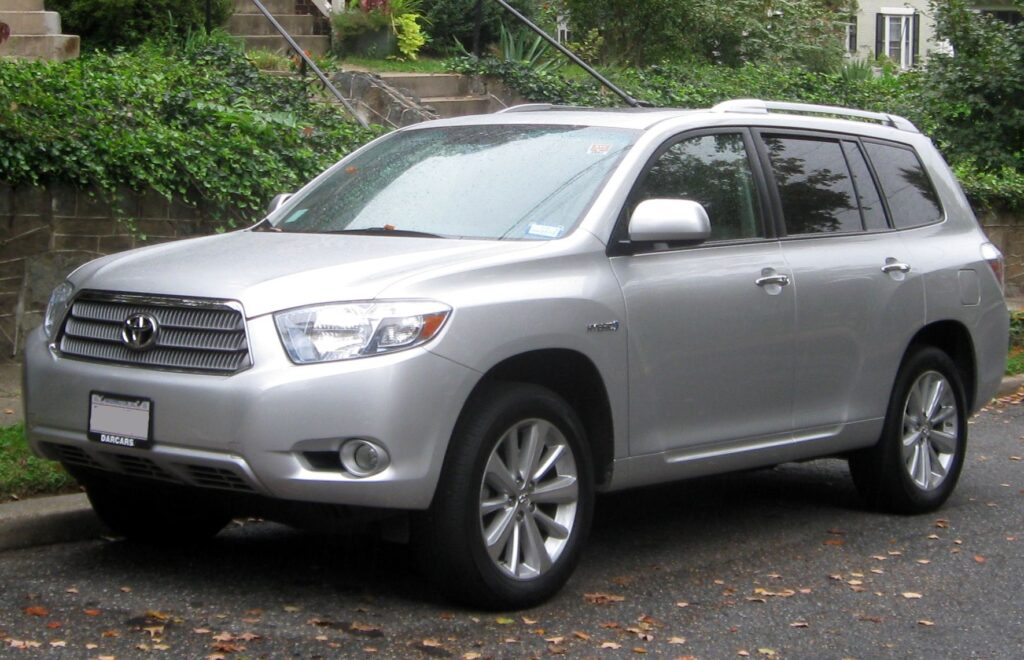
3. **Toyota Highlander: Consistent Reliability for Family Demands**The Toyota Highlander, a preferred midsize SUV for families, offers transmission options—conventional automatics or hybrid power-split units—that excel in avoiding expensive breakdowns. Conventional automatics leverage Toyota’s expertise in durable clutches and robust torque converters, while hybrid transmissions, though complex, are engineered with high tolerances and generous safety factors. Both benefit from a foundation built for long-term reliability.
Effective cooling is paramount for the Highlander, especially with its roles in towing and climbing. These SUVs generally feature adequate cooling circuits, sometimes with auxiliary coolers, and transmission control modules tuned for early shifts to prevent excessive heat buildup. The use of manufacturer-specified, often synthetic, fluids further minimizes internal wear. Owners consistently report smooth and consistent shift feel, with harsh responses being rare, thanks to conservative shift schedules and sensors that monitor temperature and load.
When repairs are needed, they are typically minor, such as a solenoid or sensor, rather than full transmission failures. Toyota’s extensive parts supply and service network also help control costs. The availability of replacement units and remanufactured assemblies means repairs are often more affordable than for vehicles with rarer, proprietary transmissions, enhancing the Highlander’s value for high-mileage drivers seeking predictability.
Car Model Information: 2023 Toyota Highlander LE
Name: Toyota Highlander
Caption: 2022 Toyota Highlander Hybrid
Manufacturer: Toyota
Aka: unbulleted list
Production: 2000–present
ModelYears: 2001–present
Class: Mid-size crossover SUV
BodyStyle: SUV
Layout: unbulleted list
Chassis: Unibody
Categories: 2010s cars, 2020s cars, All-wheel-drive vehicles, All Wikipedia articles written in American English, All articles with dead external links
Summary: The Toyota Highlander, also known as the Toyota Kluger (Japanese: トヨタ・クルーガー, Hepburn: Toyota Kurūgā), is a mid-size crossover SUV with three-row seating produced by Toyota since 2000.
Announced in April 2000 at the New York International Auto Show and arriving in late 2000 in Japan and January 2001 in North America, the Highlander became one of the first car-based mid-size SUV or mid-size crossovers. The Highlander is the crossover counterpart to the more rugged, truck-based mid-size 4Runner and became Toyota’s best-selling SUV before being surpassed by the smaller RAV4 in 2006.
The first-generation model was sold in Japan as the Kluger, which was exclusive to a dealership network called Toyota Netz as a larger alternative to the RAV4. The Kluger nameplate is also used in Australia because “Highlander” is a trademarked trim line name owned by Hyundai. The name is derived from the German word klug, which means smart or clever (klüger – with diacritics – means “more clever“ in German).
Get more information about: Toyota Highlander
Buying a high-performing used car >>>
Brand: Toyota Model: Highlander
Price: $30,985 Mileage: 60,850 mi.
Read more about: Driving Ahead: Your Ultimate Guide to Toyota’s 2025-2026 SUV and Crossover Lineup
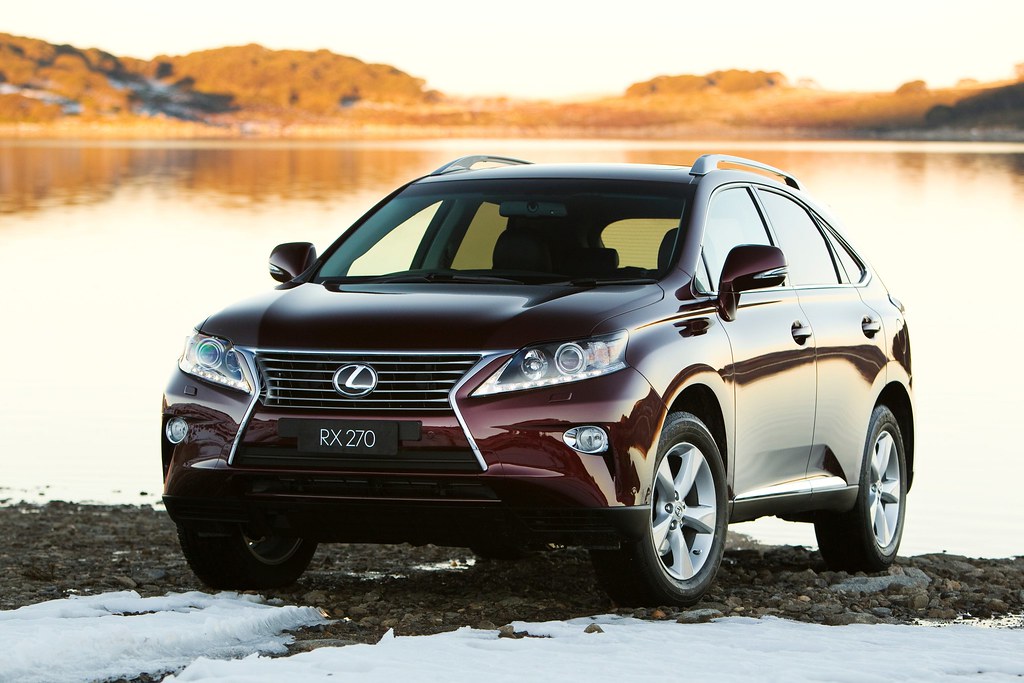
4. **Lexus RX: Luxury Defined by Enduring Transmission Quality**The Lexus RX, a luxury SUV, merges high-end refinement with the formidable reliability of Toyota engineering, sharing mechanical components and a design philosophy prioritizing longevity. Owners frequently report RX models easily exceeding 200,000 miles with minimal transmission issues, underscoring its reputation for durability. The automatic transmissions are meticulously balanced, exceptionally well-cooled, and constructed with high-quality materials for all internal friction components.
Transmission calibration in the RX emphasizes smoothness and reduced stress, reflecting the target buyer’s desire for quiet, drama-free shifts. Lexus engineers intentionally avoid aggressive programming, thereby lessening stress on internal parts during gear transitions and prolonging their lifespan. The cooler design is robust, often oversized, ensuring efficient heat dissipation even under heavy loads or during towing. Adherence to regular service, including fluid and filter changes, is key to maintaining this durability.
Even hybrid RX variants boast generally trouble-free transmission and power-split units, thanks to Lexus’s “over-engineering for durability” philosophy, featuring tight tolerances and robust quality control. Components like gears and bearings are built to higher stress levels. Repairs, when necessary, are typically modest—leaks or sensor failures—rather than catastrophic internal damage. While parts costs reflect its premium status, the infrequency of major failures keeps the overall cost per mile for transmission maintenance reasonable for its class.
Car Model Information: 2016 Lexus RX 350 Base
Name: Lexus RX
Caption: Lexus RX 500h F Sport Performance (TALH17, Germany)
Manufacturer: Toyota
Aka: Toyota Harrier
Production: December 1997 – present
ModelYears: 1998–present
Class: unbulleted list
BodyStyle: SUV
Layout: unbulleted list
Chassis: Unibody
Successor: unbulleted list
Categories: 2000s cars, 2010s cars, 2020s cars, All-wheel-drive vehicles, All Wikipedia articles written in American English
Summary: The Lexus RX (Japanese: レクサス・RX, Hepburn: Rekusasu RX) is a luxury crossover SUV sold since 1998 by Lexus, a luxury division of Toyota. Originally released in its home market of Japan in late 1997 as the Toyota Harrier, export sales began in March 1998 as the Lexus RX.
Considered as the first luxury crossover SUV by many sources, five generations of the RX have been produced to date, the first being compact in size, and the latter classified as mid-size. Both front- and four-wheel drive configurations have been used on the RX series, and several gasoline powertrain options, including V6 engines and hybrid systems, have been offered. In the Lexus model lineup, the RX sits below the larger Lexus LX (marketed as the Toyota Land Cruiser body-on-frame SUVs outside North America, respectively), and below the body-on-frame, but also mid-size GX SUV. The name “RX” stands for “Radiant Crossover”. It has also been labelled as “Recreational Cross Country” in some markets. The RX’s current Toyota counterpart is the Highlander/Kluger; past counterparts included the Harrier and Venza.
The first-generation RX 300, fitted with a 3.0-liter V6 engine, began sales in 1998. The Japanese market Harrier released in 1997 also offered a 2.2-liter inline-four, later uprated to 2.4 liters. The second-generation RX 300 (3.0-liter V6) and RX 330 (3.3-liter V6) models went on sale in 2003, with both variants supplanted by the more powerful RX 350 (3.5-liter V6) in 2006. Like the previous series, a 2.4-liter inline-four engine was sold alongside the 3.0-liter V6 in the Japanese market Harrier. In 2005, a hybridized gasoline-electric version of the 3.3-liter second-generation model was made available as the RX 400h in export markets and as the Harrier Hybrid in Japan. For the third generation released in 2009, both RX 350 (3.5-liter V6) and RX 450h (3.5-liter V6 hybrid) models were initially offered, with an entry-level RX 270 (2.7-liter inline-four) offered by Lexus in some Asian markets, including in Japan, since 2010. Since the release of the third generation, Japanese sales have occurred under the RX name as opposed to Harrier as had been the case previously. In the fourth generation, a turbocharged (2.0-liter inline-four) RX 200t/300 model was introduced to replace the previous 2.7-liter unit.
The RX has been assembled at Toyota Motor Kyushu since launch. The RX and RX Hybrid were the first Lexus models to be built outside Japan, with North American market versions produced at the Toyota Motor Manufacturing Canada plant in Cambridge, Ontario beginning 2003 (RX) and expanded in 2014 (RX Hybrid). Hybrid transaxles are built at the Kokura plant in Kitakyushu, Fukuoka since 2009.
Get more information about: Lexus RX
Buying a high-performing used car >>>
Brand: Lexus Model: RX
Price: $17,950 Mileage: 129,646 mi.
Read more about: First to the Finish or Built for the Long Haul? An Expert’s Deep Dive into 12 Cars Defining Automotive Durability
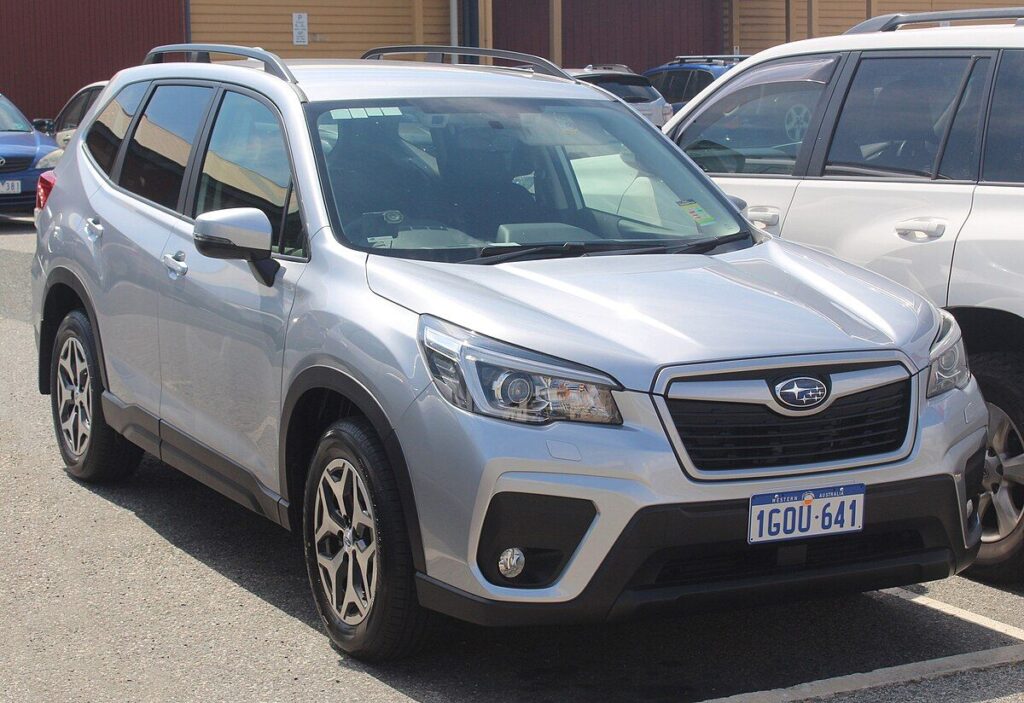
5. **Subaru Forester: Confident All-Wheel Drive with Reliable CVTs**The Subaru Forester remains a popular choice for its all-wheel-drive stability, fuel efficiency, and commendable reliability, with its Continuously Variable Transmissions (CVTs) in recent models earning a solid reputation for endurance when properly maintained. Forester CVTs exhibit fewer catastrophic failures than many competitors, thanks to conservative calibration and effective cooling provisions. Engineers integrate cooling and pressure regulation systems that ensure optimal fluid flow even under load, steep inclines, or during long downhill braking.
Given the shared drivetrain components, Subaru meticulously controls alignment and sealing, minimizing potential vulnerabilities. Owners who adhere to service intervals and avoid aggressive driving or heavy towing typically enjoy long-lasting, expensive-failure-free transmission performance. The availability of parts and specialized repair knowledge contributes to manageable maintenance costs. Minor issues, such as belt wear or fluid leaks, are often localized and do not require full transmission replacement.
Subaru’s strong dealer network and aftermarket support ensure easy access to replacement parts and control units, reducing repair times and costs. Mechanics familiar with Subaru designs effectively address common weak points, often through monitoring transmission temperatures and clear cooling systems. Many Forester owners express high satisfaction with their transmission’s long-term function, particularly when basic maintenance is consistently observed.
Car Model Information: 2015 Subaru Forester 2.5i
Name: Subaru Forester
Manufacturer: Subaru
Production: 1997–present
Class: Compact crossover SUV
BodyStyle: SUV
Related: Subaru Impreza
Layout: Front-engine, all-wheel drive
Predecessor: Subaru Bighorn
Categories: 2000s cars, 2010s cars, All-wheel-drive vehicles, All Wikipedia articles written in American English, All articles containing potentially dated statements
Summary: The Subaru Forester (Japanese: スバル・フォレスター, Hepburn: Subaru Foresutā) is a compact crossover SUV that has been manufactured by Subaru since 1997. The first generation was built on the platform of the Impreza in the style of a taller station wagon, a style that continued to the second generation, while the third-generation model onwards moved towards a crossover SUV design. A performance model was available for the second-generation Forester in Japan as the Forester STi.
Get more information about: Subaru Forester
Buying a high-performing used car >>>
Brand: Subaru Model: Forester
Price: $12,000 Mileage: 124,061 mi.
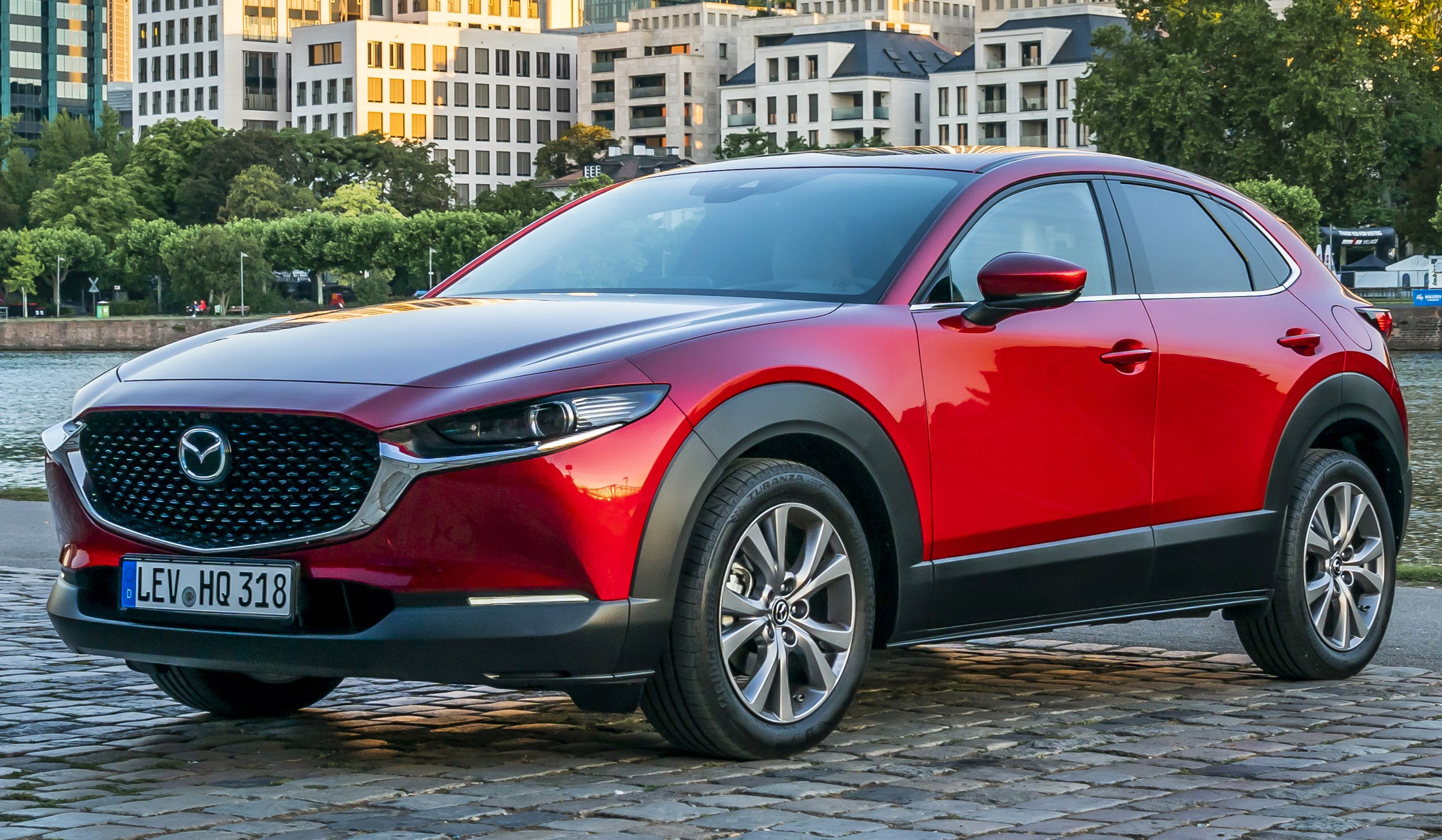
6. **Mazda CX‑5: Engaging Drive, Enduring Transmission**The Mazda CX‑5 is widely acclaimed for its harmonious blend of driving enjoyment and steadfast reliability, particularly regarding its automatic transmission. When regularly serviced and driven mindfully, the CX-5’s transmission proves exceptionally durable. Mazda’s design philosophy eschews pushing components to their limits, instead focusing on robust construction. This results in transmissions that resist overheating, shifting delays, and slippage, even after extensive city usage.
Mazda’s automatic transmissions feature sophisticated shift logic and calibration, tuned for smooth, gradual transitions. This design minimizes wear on clutch plates, reduces sudden torque loads, and prevents excessive heat buildup. The cooling systems and fluid lines are appropriately sized for typical demands, and Mazda consistently uses high-quality fluids and filters, preventing the fluid from becoming a weak link in the transmission’s lifespan.
Transmission issues in the CX-5 are typically minor, such as a solenoid pack, sensor, or seal, rather than necessitating a full rebuild. The transmission’s accessible design means labor costs for partial repairs are reasonable, and parts are readily available through dealer and aftermarket channels. Even with optional all-wheel drive, Mazda’s components are robust, allowing drivers to enjoy many years and over 150,000 miles of trouble-free performance with proper care.
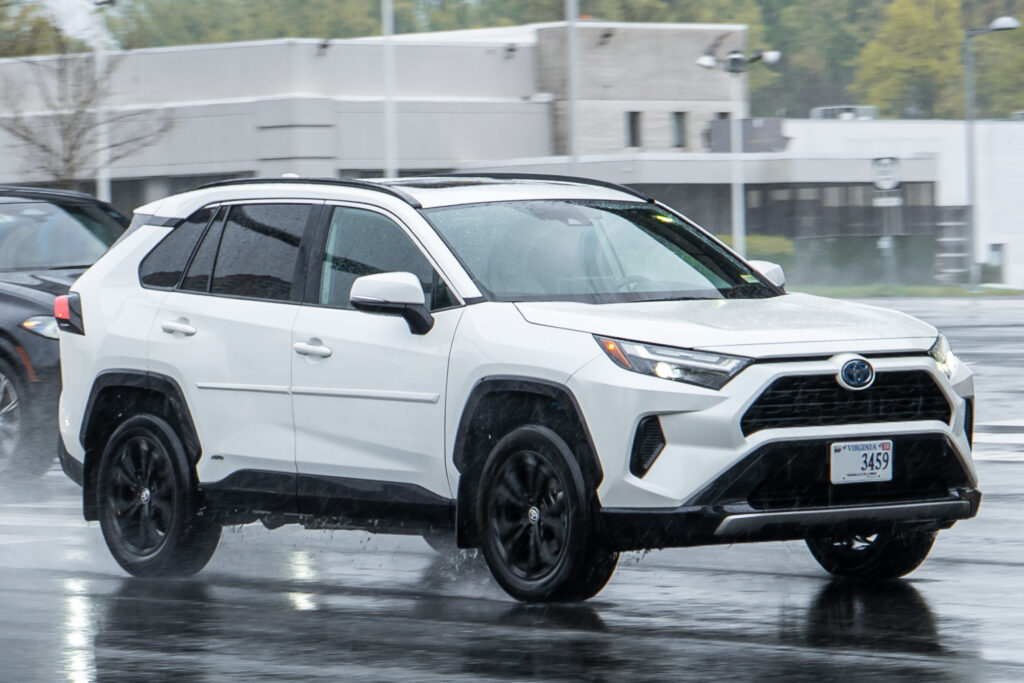
7. **Toyota RAV4: Best-Selling Compact SUV with Proven Drivetrain Reliability**As one of the world’s top-selling compact SUVs, the Toyota RAV4 has continuously enhanced its transmission systems, evolving from conventional automatics to advanced automatics and hybrid powertrains. Throughout these changes, Toyota’s core focus has remained on boosting efficiency without compromising durability. Owner reports consistently highlight fewer expensive transmission repairs for the RAV4 compared to many competitors, underscoring its strong reliability credentials.
As one of the world’s top-selling compact SUVs, the Toyota RAV4 has continuously enhanced its transmission systems, evolving from conventional automatics to advanced automatics and hybrid powertrains. Throughout these changes, Toyota’s core focus has remained on boosting efficiency without compromising durability. Owner reports consistently highlight fewer expensive transmission repairs for the RAV4 compared to many competitors, underscoring its strong reliability credentials.
Toyota ensures the RAV4’s transmission cooling systems are exceptionally capable, especially crucial in hybrid variants where engine and electric motors create varied stresses. Cooling lines, heat exchangers, and fluid routing are meticulously designed to maintain safe operating temperatures even in hot ambient conditions. The shift programming is calibrated to avoid harshness, and torque converter lock-up is managed intelligently to minimize heat generation during highway cruising, preserving component integrity.
Clear maintenance schedules for fluid changes, filter inspections, and system checks are provided, and adherence leads to smooth gear changes, minimal noise, and stable performance over extensive mileage. While minor sensor or solenoid issues may occur, major damage necessitating transmission replacement is rare. Strong parts availability, due to millions of RAV4s produced, and widespread mechanic familiarity ensure that small wear issues are addressed before they become costly failures, contributing to the RAV4’s economical and dependable ownership experience.
Continuing our exploration of SUVs engineered for enduring transmission health, we now turn to the next seven models that consistently prove their mettle on the road, offering owners significant peace of mind. These vehicles further exemplify how thoughtful design and a commitment to quality can translate into years of trouble-free driving, saving owners from the notorious costs associated with transmission failure.
Car Model Information: 2022 Toyota RAV4 XLE
Name: Toyota RAV4
Caption: 2019 Toyota RAV4 LE AWD (AXAA54, US)
Manufacturer: Toyota
Aka: unbulleted list
Production: 1994–present
Class: Compact crossover SUV
Layout: unbulleted list
Categories: 2000s cars, 2010s cars, 2020s cars, All-wheel-drive vehicles, All Wikipedia articles written in British English
Summary: The Toyota RAV4 (Japanese: トヨタ・RAV4, Hepburn: Toyota Ravufō) is a compact crossover SUV produced by the Japanese automobile manufacturer Toyota. It is known for starting the wave of compact crossovers. The RAV4 is one of the best-selling SUVs of all time, having sold over 10 million units by February 2020. In February 2025, the RAV4 replaced the Ford F-150 as the top selling car in the United States, after nearly four decades of the F-150’s reign.
It made its debut in Japan and Europe in 1994, and in North America in 1995, being launched in January 1996. The vehicle was designed for consumers wanting a vehicle that had most of the benefits of SUVs, such as increased cargo room, higher visibility, and the option of full-time four-wheel drive, along with the maneuverability of a mid-size car. The vehicle’s name is an abbreviation of “Recreational Active Vehicle with 4-wheel drive”, or “Robust Accurate Vehicle with 4-wheel drive”, although not all models come equipped with the four-wheel drive system.
For the third-generation model, Toyota offered both short- and long-wheelbase versions of the RAV4. Short-wheelbase versions were sold in Japan and Europe; long-wheelbase versions in Australia and North America. Toyota of Japan also sold the longer-wheelbase version as the Toyota Vanguard (Japanese: トヨタ・ヴァンガード, Hepburn: Toyota Vangādo) at Toyopet Store dealership chain from 2005 through 2016. RAV4 for the Japanese market were sold at two different Toyota dealership chains, Corolla Store and Netz.
Get more information about: Toyota RAV4
Buying a high-performing used car >>>
Brand: Toyota Model: RAV4
Price: $26,982 Mileage: 59,305 mi.
Read more about: Driving Ahead: Your Ultimate Guide to Toyota’s 2025-2026 SUV and Crossover Lineup
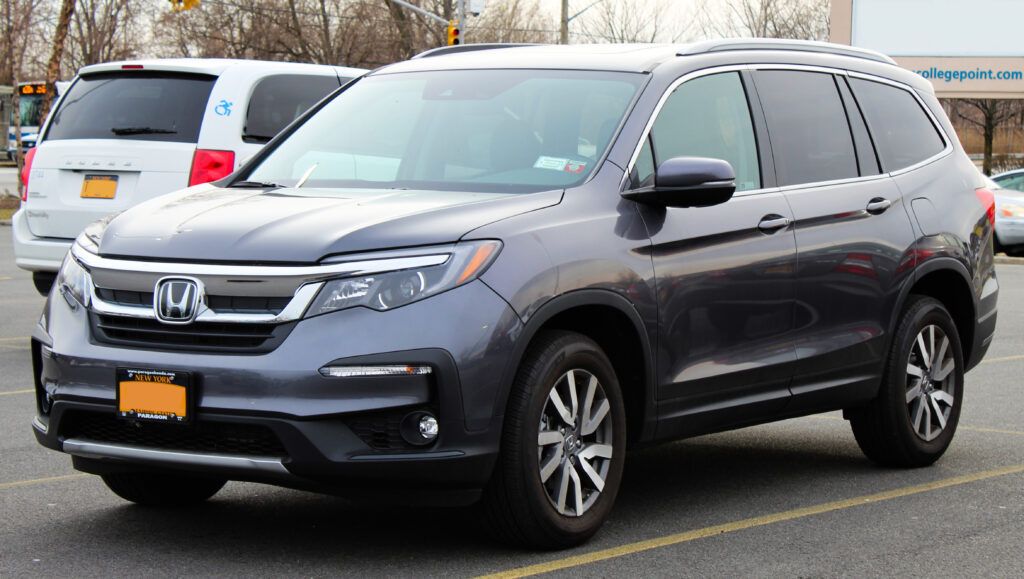
8. **Honda Pilot: Dependable Power for the Family Journey**The Honda Pilot, a larger SUV frequently chosen for family transport, often navigates heavy traffic, engages in towing tasks, or covers long distances. Its transmission systems, which typically include six- or nine-speed automatics depending on the model year, are engineered with robust hardware and incorporate well-thought-out cooling provisions. Given that many Pilots are used in demanding situations, owners consistently commend their durability and the notably low incidence of catastrophic transmission failure.
Manufacturers have gone to great lengths to ensure the Pilot’s transmission experiences manageable stress, even under significant load. The torque converters frequently feature robust lock-up clutches, specifically designed to reduce slippage and heat buildup during highway driving, thereby preserving internal components. Transmission fluid cooling lines are expertly integrated and often include additional cooling capacity, with some higher trim or towing packages even featuring external coolers to manage thermal loads effectively.
Crucially, the shift programming within the Pilot is meticulously tuned to prevent aggressive downshifts or excessively high engine revolutions when under load. This deliberate calibration plays a vital role in reducing wear on critical components such as clutch packs and planetary gear sets, directly contributing to the transmission’s extended lifespan. These engineering decisions collectively bolster the Pilot’s reputation for reliability, even in challenging operational scenarios.
Regular service intervals are paramount for maintaining the Honda Pilot’s transmission longevity. Honda provides specific schedules for fluid changes, filter servicing, and thorough inspections of cooling lines. Owners who diligently adhere to these recommendations consistently report long service lives for their transmissions, validating the effectiveness of preventive maintenance in preserving the vehicle’s core mechanical integrity.
Should repairs become necessary, they are typically confined to easily replaceable components, such as seals, gaskets, sensors, valves, or solenoids. Mechanical failure of the core transmission assembly, which would necessitate extensive rebuilds or complete replacements, remains a rare occurrence. This distinction is vital for controlling ownership costs over the vehicle’s lifespan.
The widespread availability of service knowledge and parts significantly contributes to reducing repair expenses for the Pilot. As a popular vehicle across numerous markets, there is a robust aftermarket for essential components like filters, sensors, fluids, and remanufactured parts. Mechanics highly familiar with these SUVs possess a keen understanding of common weak points, enabling them to preempt potential issues. This proactive care often prevents unexpected breakdowns, ultimately saving owners from substantial repair bills in the long run.
Car Model Information: 2022 Honda Pilot AWD EX-L
Name: Honda Pilot
Caption: 2023 Honda Pilot Touring (US)
Manufacturer: Honda
Production: 2002–present
ModelYears: 2003–present
Class: Mid-size crossover SUV
BodyStyle: SUV
Layout: unbulleted list
Categories: 2010s cars, 2020s cars, All-wheel-drive vehicles, All Wikipedia articles written in American English, All articles containing potentially dated statements
Summary: The Honda Pilot is a mid-size crossover SUV with three-row seating manufactured by Honda since 2002 for the 2003 model year. Primarily aimed at the North American market, the Pilot is the largest SUV produced by Honda. As of 2025, the Pilot is manufactured in Lincoln, Alabama, and the Pilot was produced in Alliston, Ontario until April 2007. The first generation Pilot was released in April 2002 as a 2003 model.
The Pilot shares its platform with the Acura MDX, as well as the North American market Odyssey minivan. The Pilot’s unibody construction and independent suspension are designed to provide handling similar to that of a car, and it has integrated perimeter frame rails to permit towing and light off-road use.
Prior to the introduction of the Pilot, Honda marketed the compact crossover CR-V, the midsize Passport (rebadged Isuzu Rodeo) fullsize Crossroad (rebadged Land Rover Discovery series 1) and Acura SLX (rebadged Isuzu Trooper). Unlike the Passport, Crossroad and SLX which were truck-based body-on-frame designs, the Pilot shared a unibody construction layout akin to the smaller Civic-based CR-V. The Pilot is Honda’s largest SUV, although the 2010 Crosstour surpassed the Pilot in length.
The Pilot is sold in North America and the Middle East, while the Honda MDX (first generation Acura MDX) was marketed in Japan and Australia for several years. The second-generation Pilot was also sold in Russia, Ukraine, South Korea, Latin America, and the Philippines.
Get more information about: Honda Pilot
Buying a high-performing used car >>>
Brand: Honda Model: Pilot
Price: $28,961 Mileage: 58,134 mi.
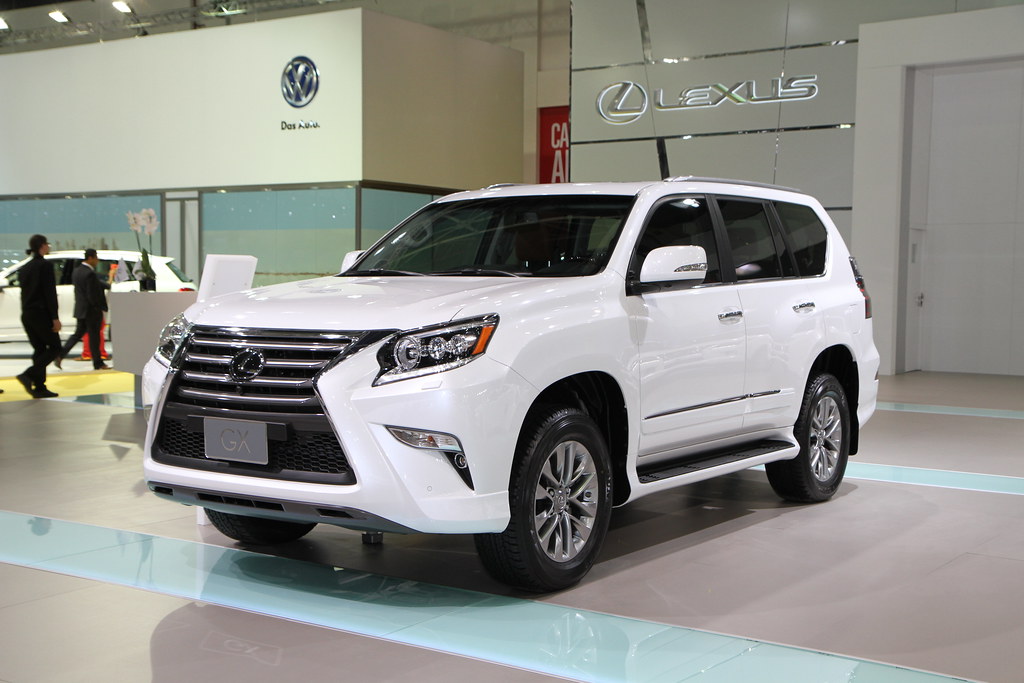
9. **Lexus GX: Rugged Luxury with Unyielding Durability**The Lexus GX stands apart as a more rugged SUV, frequently built on a traditional body-on-frame architecture, and often deployed in demanding environments. Its transmission system is inherently heavy-duty, frequently sharing components and design philosophies with Toyota trucks and other robust SUVs. This lineage means it is specifically engineered for towing, navigating rough terrain, and ensuring a prolonged operational life. Owners who utilize the GX for serious work or adventurous excursions seldom report the need for transmission replacements, finding that minor repairs are far more common than extensive internal failures.
A significant advantage of the GX’s design is its heavy-duty construction. Its transmission is equipped with larger gears, stronger clutches, and more durable materials throughout its internal structure. The torque converters tend to be generously sized, and the cooling paths are exceptionally capacious, ensuring optimal thermal management. Furthermore, the lubricant and fluid capacities are often higher, a critical factor that aids in dissipating heat more effectively under strenuous conditions.
When the Lexus GX is engaged in towing heavy loads or traversing slippery, challenging terrains, these robust design features enable the transmission to operate without succumbing to overheating or suffering internal damage. This capability underscores the vehicle’s fundamental engineering for endurance, making it a reliable partner for demanding tasks where lesser transmissions might falter.
Regular servicing, including consistent fluid changes, meticulous seal inspections, and vigilant monitoring of the cooling systems, is absolutely essential for the Lexus GX. Owners who unfortunately neglect these crucial maintenance steps often encounter issues, whereas those who diligently keep up with maintenance generally experience excellent transmission performance over remarkably long lifespans. It is also common for GX owners, accepting the vehicle’s higher maintenance intervals and associated costs, to treat their vehicle with the necessary care, which contributes significantly to a lower incidence of expensive transmission repairs.
Given that Lexus is a premium luxury brand, parts costs are naturally higher. However, the infrequency of major failures for the GX’s transmission helps offset this. When a component does fail, it is typically attributable to external causes, such as fluid leaks from hoses or issues with control modules, rather than internal gear damage or a complete assembly failure. As a result, the long-term ownership costs specifically for the transmission tend to remain reasonable, particularly when compared to what might be anticipated from a vehicle of similar size and intended heavy-duty usage.
Car Model Information: 2023 Lexus GX 460 Base
Name: Lexus GX
Caption: 2024 Lexus GX 550 (J250)
Manufacturer: Toyota
Aka: Toyota Land Cruiser Prado
Production: 2002–present
ModelYears: 2003–present
Assembly: Tahara, Aichi
Class: Full-size car,Luxury car,SUV
BodyStyle: SUV
Layout: Front-engine, four-wheel-drive
Chassis: Body-on-frame
Categories: 2010s cars, 2020s cars, All-wheel-drive vehicles, All articles containing potentially dated statements, All articles with dead external links
Summary: The Lexus GX (Japanese: レクサス・GX, Hepburn: Rekusasu GX) is a mid/full-size luxury SUV sold in North American and Eurasian markets by Lexus, a luxury division of Toyota. The GX is based on the Toyota Land Cruiser Prado, from which it derives its off-road capability.
Lexus introduced the first generation, known as the GX 470 in 2002, and subsequently became the third SUV to enter the Lexus lineup. A full-time four-wheel drive system is standard with low-range gearing. The 4.7-liter V8 engine in the GX 470 was the same as used on the larger LX 470. The firm next introduced the second-generation model in 2009, badged GX 460 to reflect the switch to a 4.6-liter V8 engine. Lexus later released a lower displacement GX 400 in 2012 for the Chinese market, with a 4.0-liter V6 engine. The third-generation model introduced in 2023 uses the GX 550 moniker with a twin-turbocharged 3.4-liter V6 engine and GX 550h with a turbocharged hybrid electric 2.4-liter four-cylinder engine.
As of 2024, the GX is positioned between the larger LX or TX and the smaller RX. Though it is thought the GX has always been larger than the RX, from 2015 to 2022, the RX is slightly longer and slightly wider than the GX and therefore the GX was considered smaller. All GX production has occurred at the Tahara plant in Japan, alongside the Land Cruiser Prado and the export-minded Toyota 4Runner.
Some countries classify the GX as a full-size vehicle (e.g., Australia), while some classify it as a mid-size vehicle (e.g., US), depending on local regulations.
The name “GX” stands for “Grand Crossover”. Unlike crossover SUVs, the GX has body-on-frame construction and “Crossover” stands for it being in the middle of the range.
Get more information about: Lexus GX
Buying a high-performing used car >>>
Brand: Lexus Model: GX
Price: $52,351 Mileage: 27,660 mi.
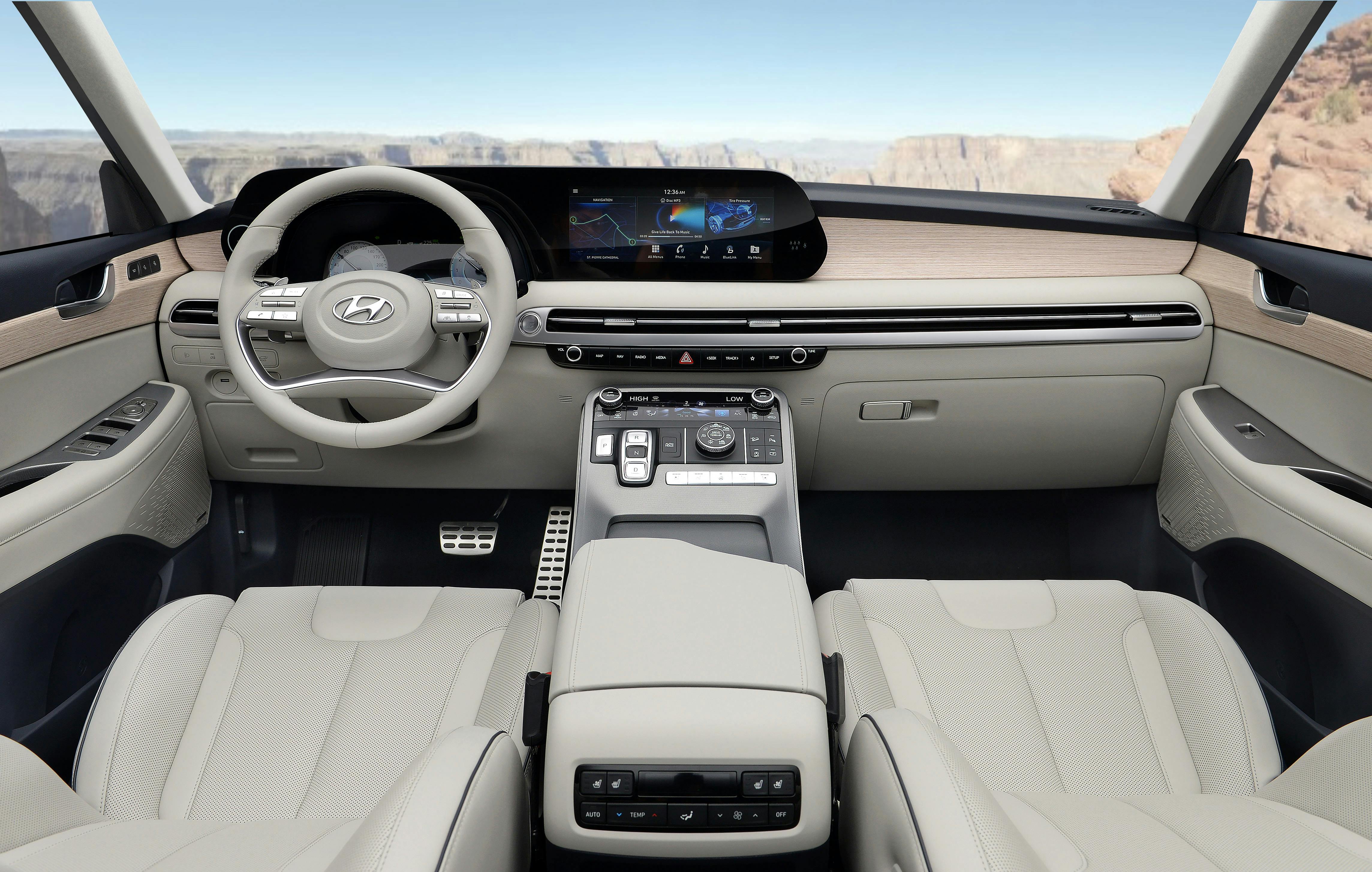
10. **Hyundai Palisade: Modern Sophistication, Reliable Performance**The Hyundai Palisade is a relatively newer entrant among large three-row SUVs, quickly establishing a reputation for its sophisticated design and dependable mechanicals. It employs modern automatic transmissions, frequently featuring eight or more speeds, meticulously engineered with careful attention to cooling efficiency, precise shift calibration, and superior material quality. Many owners consistently report that the transmission performance remains smooth and reliably consistent across many years and extensive miles. Problems that do occasionally surface tend to be identified early and typically involve minor, easily replaceable parts rather than requiring full transmission rebuilds.
Transmission cooling is a thoughtfully integrated aspect of the Palisade’s design. Recognizing the significant tow ratings desired by many drivers, engineers have ensured ample capacity in both coolant routing and heat exchangers, supplemented by an array of sensors to continuously monitor temperature. The shift logic is intelligently programmed to safeguard the transmission under load, specifically designed to prevent harsh downshifts, mitigate overheating, and judiciously limit torque converter slippage whenever feasible. These proactive design choices significantly reduce wear on crucial friction elements and bearings, extending the transmission’s life.
Maintenance schedules for Hyundai models, including the Palisade, typically include recommended fluid and filter changes at regular intervals. While some owners may occasionally defer these services, those who diligently follow the service manual’s guidelines tend to report consistent, trouble-free transmission performance. The widespread availability of parts and a well-trained network of technicians across most markets further contribute to the vehicle’s long-term serviceability. Additionally, the comprehensive warranty coverage provided for new vehicles often catches any potential issues early, effectively reducing the risk of long-term damage or costly out-of-pocket expenses.
Hyundai’s substantial increase in engineering investment in recent years is clearly reflected in the quality of materials and components used within the Palisade’s transmission. Gear teeth, solenoids, sensors, and seals are all manufactured with durability as a primary objective. When minor problems do occur, they are typically localized and relatively straightforward to address. Consequently, even after experiencing heavy family use, extensive highway miles, or towing moderate loads, a significant number of Palisade drivers successfully avoid the kinds of transmission failures that typically lead to substantial repair bills.
Car Model Information: 2024 Hyundai PALISADE Calligraphy
Name: Hyundai Palisade
Manufacturer: Hyundai Motor Company
Production: 2018–present
ModelYears: 2020–present
Class: Mid-size crossover SUV
BodyStyle: Sport utility vehicle
Related: Kia Telluride
Predecessor: Hyundai Santa Fe#Maxcruz
Layout: Front-engine, front-wheel-drive layout,Front-engine, four-wheel-drive layout
Chassis: Unibody
Caption: Second-generation Palisade
Categories: 2020s cars, All-wheel-drive vehicles, All Wikipedia articles written in British English, All articles with bare URLs for citations, All articles with unsourced statements
Summary: The Hyundai Palisade (Korean: 현대 팰리세이드) is a mid-size crossover SUV manufactured and marketed by Hyundai Motor Company since late 2018, replacing the Maxcruz (also known as Santa Fe XL outside of South Korea) as the flagship SUV under the Hyundai brand.
The term palisade means a fence of defensive stakes or a series of coastal cliffs — the latter recalling the neighborhood of Pacific Palisades, Los Angeles or the nearly forty mile Hudson River palisade, running north from opposite Manhattan.
Get more information about: Hyundai Palisade
Buying a high-performing used car >>>
Brand: Hyundai Model: Palisade
Price: $38,990 Mileage: 52,577 mi.
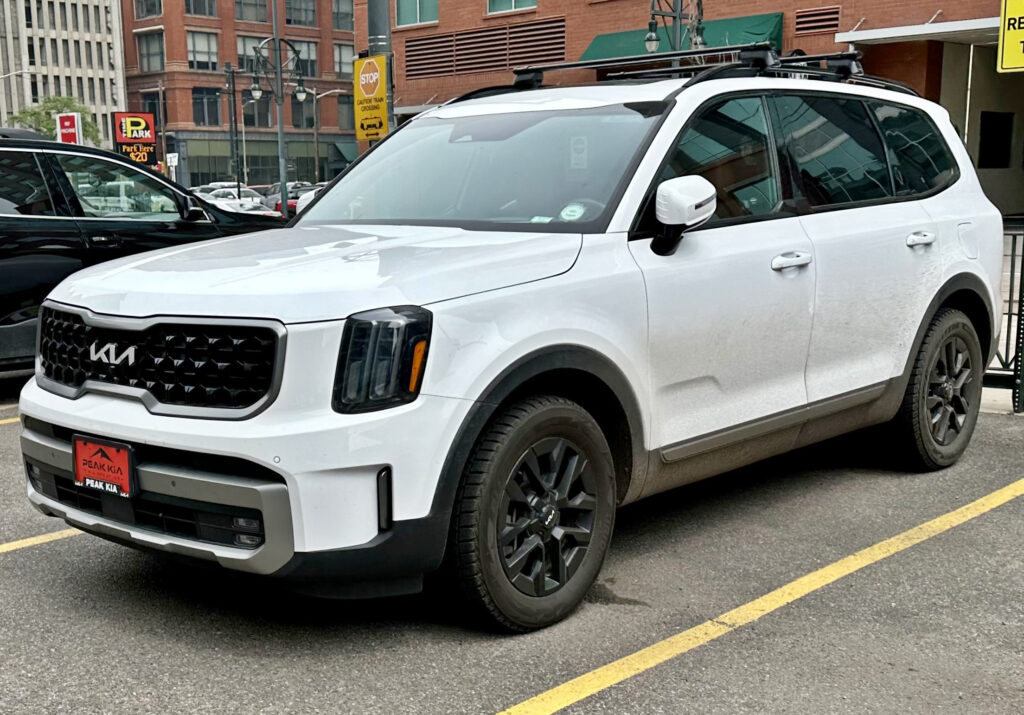
11. **Kia Telluride: Style Meets Substance in Transmission Reliability**The Kia Telluride has garnered widespread acclaim for its compelling combination of distinctive style, superior comfort, robust performance, and unwavering reliability. Its transmission system is generally exceptionally well-matched to the engine, a synergy that results in less operational stress, fewer undesirable rev fluctuations, and more moderate generation of heat within the unit. Owners frequently report a consistently smooth shifting experience over time, with very few of the common transmission faults that often plague less robust models, affirming its dependable design.
The shift programming in the Telluride is engineered to avoid aggressive timing unless explicitly demanded by direct driver input. In most driving scenarios, it deliberately favors smoothness and optimal fuel economy, two characteristics that inherently contribute to reducing wear and extending component life. The cooling systems are notably capable, featuring intelligently routed fluid lines and sufficient capacity within their heat exchangers to effectively manage thermal loads. Furthermore, because the Telluride shares a mechanical heritage with other well-regarded Hyundai-Kia products, parts supply is robust, and mechanics possess ample experience in diagnosing and resolving minor transmission issues.
When problems with the Telluride’s transmission do occur, they are most frequently sensor- or solenoid-related, or stem from fluid leaks or degraded seals. These types of issues are considerably less expensive to rectify than more severe clutch pack failures or extensive internal mechanical damage. Many owners report experiencing trouble only after accumulating substantial mileage, and even in these instances, the issue tends to be identified and addressed early, preventing escalation. Given that Kia often includes generous warranty periods and comprehensive maintenance recommendations, many Telluride owners discover that the overall cost of ownership over the long run remains quite manageable, particularly concerning transmission upkeep.
The Telluride’s reliable transmission instills confidence in a great many buyers who are seeking a roomy and capable SUV with fewer inherent risks of unexpected repair bills. As long as the owner conscientiously approaches fluid changes and diligently upholds the cooling system’s maintenance as integral parts of vehicle ownership, the likelihood of encountering major transmission faults remains remarkably low, contributing to a consistently positive ownership experience.
Car Model Information: 2022 Kia Telluride SX
Name: Kia Telluride
Caption: 2022 Kia Telluride EX (US)
Manufacturer: Kia
Production: February 2019 – present
ModelYears: 2020–present (North America)
Class: Mid-size crossover SUV
BodyStyle: SUV
Layout: unbulleted list
Related: Hyundai Palisade
Predecessor: Kia Mohave
Sp: us
Categories: All Wikipedia articles written in American English, Articles with short description, Cars introduced in 2019, Commons category link from Wikidata, Crossover sport utility vehicles
Summary: The Kia Telluride is a mid-size crossover SUV with three-row seating manufactured and marketed by Kia since 2019. Positioned above the smaller Sorento, the Telluride was previewed as a concept car in 2016, with the production model debuting in early 2019 as a 2020 model. It shares components and specifications with its sister model, the Hyundai Palisade, including its engine, transmission, and wheelbase. Named after the town of Telluride, Colorado, the Telluride is the largest vehicle Kia has manufactured in the United States.
Get more information about: Kia Telluride
Buying a high-performing used car >>>
Brand: Kia Model: Telluride
Price: $28,500 Mileage: 61,098 mi.
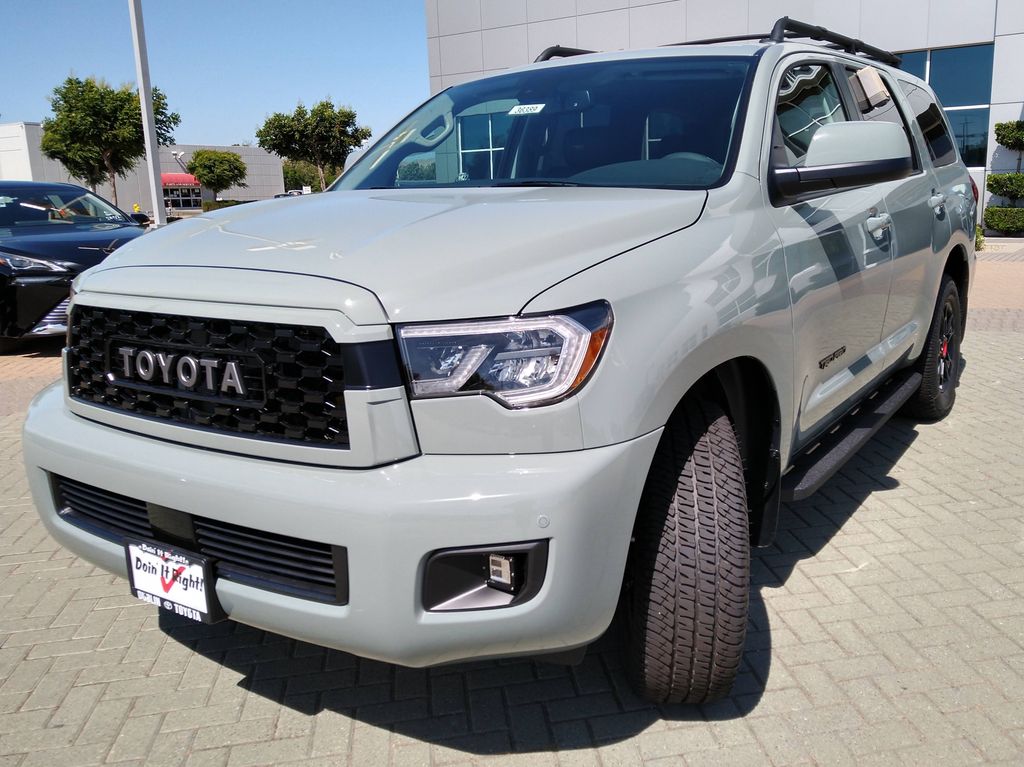
12. **Toyota Sequoia: Heavy-Duty Performance, Enduring Transmission**The Toyota Sequoia is a truly large SUV, solidly built on a robust truck chassis. Its transmission system is inherently designed to capably handle serious loads, demanding towing, and extensive highway drives, all with unwavering reliability. Because of these demanding design parameters, its internal components are fundamentally heavy-duty. This includes larger torque converters, significantly stronger planetary gear sets, and more substantial cooling systems than those typically found in smaller SUVs. These heavy-duty specifications directly translate into exceptional durability and resilience, even under the most considerable operational stress.
The Sequoia also greatly benefits from Toyota’s well-established policy of conservative design and a philosophy of incremental improvements. When newer model years introduce updates to materials or electronics, these changes are often implemented to reinforce any weak spots identified in earlier iterations, rather than pursuing radical, untested redesigns. Engineers consistently prioritize avoiding over-optimizing for minimal weight or cost savings, especially when such decisions might compromise long-term durability. This strategic approach plays a crucial role in significantly reducing the risk of expensive and catastrophic transmission failures.
Owners who frequently engage in towing, venture off-pavement, or regularly transport heavy loads still report that the Sequoia’s transmission life consistently tends to exceed expectations. When diligent maintenance is performed—including regular fluid changes, comprehensive filter servicing, careful inspection of cooling lines, and a conscious effort to avoid severe overloading—the transmission invariably holds up exceptionally well. Issues such as fluid leaks and sensor malfunctions are more commonly reported than internal mechanical failures, and the need for replacement of internal mechanical parts within the transmission is remarkably rare, even in numerous cases of high-mileage vehicles.
Given the commonality of parts within Toyota’s extensive truck and SUV lineage, repair facilities widely familiar with these vehicles possess the specific expertise required to properly service the Sequoia’s transmission. The availability of remanufactured or refurbished units is also considerably better, and comprehensive service manuals are readily detailed and accessible. All of these factors collectively reduce both labor costs and the potential risk of improper repairs. For many owners, the total cost of transmission ownership, averaged over many years, remains impressively low, further enhancing the Sequoia’s reputation for dependable value.
Car Model Information: 2005 Toyota Sequoia SR5
Name: Toyota Sequoia
Manufacturer: Toyota
Production: September 2000 – present
ModelYears: 2001–present
Class: Full-size SUV
BodyStyle: SUV
Layout: unbulleted list
Related: unbulleted list
Sp: us
Categories: 2010s cars, 2020s cars, All-wheel-drive vehicles, All Wikipedia articles written in American English, All articles containing potentially dated statements
Summary: The Toyota Sequoia is a full-size SUV manufactured by Toyota mainly for the North American market since 2000 for the 2001 model year, being derived from the Tundra pickup truck. It is the second largest SUV ever produced under the Toyota brand, after the Japan-exclusive, military-focused Mega Cruiser.
Previously manufactured at Toyota Motor Manufacturing Indiana in Princeton, Indiana between 2000 and 2021, and then in Toyota Motor Manufacturing Texas in San Antonio, Texas since 2022, the Sequoia is the first vehicle from a Japanese marque in the popular mainstream full-sized SUV class in North America, and initial planning done by first-generation Sequoia chief engineer Kaoru Hosokawa aimed the Sequoia directly at the Ford Expedition, Chevrolet Tahoe/GMC Yukon, and other full-size SUVs.
Up until the 2021 model year, the Sequoia was slotted between the mid-size 4Runner and the premium Land Cruiser in the North American Toyota SUV lineup. With the discontinuation of North American sales of the Land Cruiser from the 2022 model year onward, the Sequoia became the flagship SUV in Toyota’s North America lineup.
As of 2021, the Sequoia is sold in the United States, Canada, Mexico, and Costa Rica. It is offered in left-hand drive only.
The Sequoia is named after the Giant Sequoia, a species of tall redwood trees native to California.
Get more information about: Toyota Sequoia
Buying a high-performing used car >>>
Brand: Toyota Model: Sequoia
Price: $9,962 Mileage: 173,681 mi.
Read more about: Beyond the Hype: 12 Underrated SUVs Proven to Outlast the Competition, With Reliability to Surpass 250,000 Miles
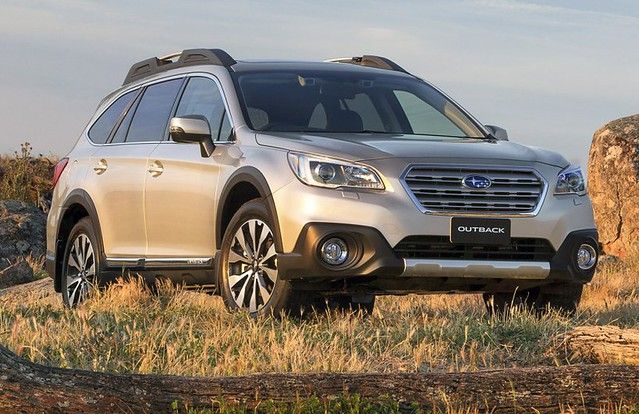
13. **Subaru Outback: Crossover Versatility, Enduring CVT**While technically classified as a wagon-crossover, the Subaru Outback adeptly functions much like many SUVs, offering desirable high ground clearance, standard all-wheel drive, and impressive rugged usability. Its transmission systems, predominantly continuously variable transmissions (CVTs) in modern versions, have significantly benefited from Subaru’s continuous refinement of their designs over many years. The Outback stands out among the crossover-SUV group for reporting fewer transmission breakdowns, particularly when owners commit to proper maintenance.
Subaru’s CVT units specifically employed in the Outback are distinguished by their effective cooling mechanisms and the use of fluid specifications precisely tailored to resist heat degradation, a common enemy of transmission longevity. Recognizing that Outbacks frequently encounter challenging conditions such as rough roads, snow, mud, or gravel, Subaru has incorporated durable sealing and robust protection measures to effectively keep dirt and moisture away from the sensitive transmission area. Owners who avoid excessive load or overly aggressive driving habits consistently find that the shift behavior remains smooth and remarkably consistent, indicating minimal wear.
The wear on critical CVT components like belts and pulleys tends to occur gradually over an extended period rather than manifesting as sudden, catastrophic failures. This predictable wear pattern allows for proactive maintenance and intervention, preventing minor issues from escalating. When minor transmission-related issues do occur, they typically originate from fluid leaks, degraded clamps, worn seals, or faulty sensors. Crucially, these issues are generally repairable without necessitating the replacement of major internal components.
Mechanics who are familiar with Subaru vehicles are adept at identifying common weak spots and regularly inspect them during routine maintenance, allowing for preventive care that tends to yield significant long-term savings. Given Subaru’s strong dealer network, parts are readily available, and specialized repair knowledge for their unique CVTs is widespread. Even though CVTs may be less familiar to some general mechanics, Subaru-specific shops have built substantial expertise in servicing these units effectively. Many Outback owners express pleasant surprise at how trouble-free their transmission has proven to be over long periods of ownership, as long as basic maintenance guidelines are diligently followed.
Car Model Information: 2011 Subaru Outback 3.6 R
Name: Subaru Outback
Caption: 2023 Subaru Outback Premium
Manufacturer: Subaru
Production: 1994–present
ModelYears: 1995–present
Assembly: Ota, Gunma
Aka: Subaru Legacy
Class: Mid-size car
BodyStyle: station wagon
Categories: All Wikipedia articles written in American English, All articles with unsourced statements, Articles containing Japanese-language text, Articles with short description, Articles with unsourced statements from April 2012
Summary: The Subaru Outback is an automotive nameplate used by the Japanese automaker Subaru for two different themed vehicles: a Legacy-derived station wagon, the Outback (1994–present, also sold as Legacy Outback (Japanese: スバル・レガシィアウトバック, Hepburn: Subaru Regashi Autobakku) in some markets), and an Impreza-derived off-road themed hatchback, the Outback Sport (1994–2011).
Most versions of the Outback wagon and Outback Sport have had all-wheel drive as standard equipment.
Get more information about: Subaru Outback
Buying a high-performing used car >>>
Brand: Subaru Model: Outback
Price: $9,980 Mileage: 111,766 mi.
Read more about: Buckle Up, Bargain Hunters! 12 Used Cars Under $20K That Are Built to Go the Distance (and Save Your Wallet!)
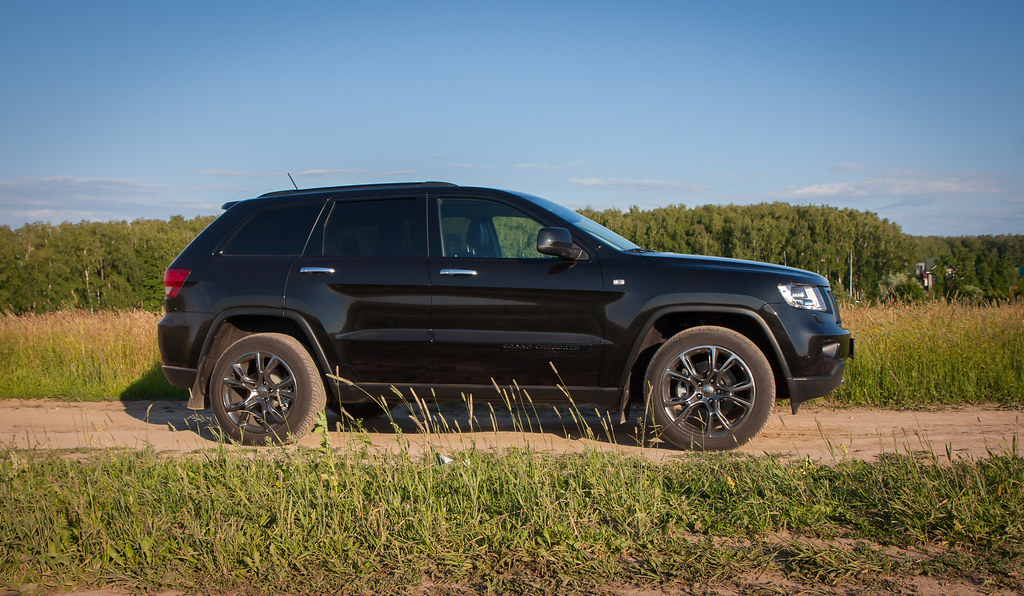
14. **Jeep Grand Cherokee: A Legacy of Improvement in Drivetrain Reliability**Among the larger SUVs, the Jeep Grand Cherokee, while having faced its share of transmission issues in some earlier model years, has shown substantial improvement in its more recent generations. Contemporary Grand Cherokee models now feature stronger internal components, upgraded torque converters, enhanced cooling circuits, and significantly better software calibration. Consequently, many owners report experiencing far fewer serious transmission repairs than was the case in past years, reflecting a concerted effort by Jeep to bolster drivetrain dependability.
Recent Grand Cherokee models typically utilize modern automatic transmissions that boast a higher number of gears, often eight or more. These units are constructed with heavier-duty clutches and superior materials throughout. The cooling systems have been made more robust, incorporating larger fluid lines and more efficient heat exchangers, which are critical for managing the thermal demands placed on a large SUV. Furthermore, the shift logic has been substantially improved to reduce harshness, intelligently avoid unnecessary downshifts under heavy load, and manage torque converter lock-up more precisely. All these enhancements collectively work to significantly reduce stress on the internal parts of the transmission.
Maintenance remains a critical factor for the longevity of these improved Grand Cherokee transmissions. Owners who consistently adhere to fluid change schedules, diligently ensure there are no leaks, proactively monitor transmission temperature, and operate the SUV within its designed parameters tend to successfully avoid major failures. When repairs are needed in these newer Cherokees, they are now more likely to be for minor components such as sensors, solenoids, or addressing fluid leaks, rather than requiring full internal rebuilds. This shift helps keep repair bills within a much more manageable scale, improving overall ownership costs.
Parts availability is also steadily improving, a benefit derived from the Grand Cherokee’s enduring popularity. Numerous aftermarket suppliers and mechanics are now much more familiar with its contemporary transmission designs, making remanufactured or replacement units easier to source. The warranty coverage provided for newer units often offers an additional layer of peace of mind during the initial years of ownership. Many owners also find that by the time expensive transmission repairs might typically be expected, the vehicle’s mileage or age has already led to significant depreciation of its overall value, which often makes the decision regarding repair choices more financially forgiving.
### Protecting Your Investment: Recognizing Warning Signs and Planning for Maintenance
While we have highlighted these fourteen exceptional SUVs known for their robust transmissions, it is equally important for every owner to be vigilant about their vehicle’s health. Transmission failure is undeniably one of the most expensive and disruptive vehicle repairs an owner can face, with average costs frequently exceeding $4,700. However, the good news is that transmissions often provide early warning signs before a catastrophic breakdown occurs. Recognizing these red flags and acting swiftly can significantly reduce damage and, consequently, repair expenses.
**Recognizing the Warning Signs of a Failing Transmission**
A vehicle’s transmission, though often overlooked until a problem arises, is a vital system responsible for transferring power from the engine to the drive wheels. Being alert to its operational cues can minimize damage and costs. Here’s what every SUV owner should watch for:
* **Slipping Gears**: This manifests as a sudden, unintended gear change, or a sensation that the transmission isn’t fully transferring power from the engine to the wheels. It can stem from a damaged gear, a worn clutch, or critically, low transmission fluid.
* **Car Won’t Move in Gear**: If the engine revs in response to accelerator input, but the vehicle remains stationary when in drive or reverse, this is a severe symptom. It often indicates extremely low transmission fluid or a critical failure of an internal transmission component.
* **Delayed or Harsh Shifting**: Slow, unusually rough, or jerky transitions between gears are not normal. These can be indicative of a worn solenoid, issues with the transmission fluid itself, or more concerning, internal damage developing within the transmission.
* **Grinding or Shaking During Acceleration**: Any vibrations or a distinctly rough sensation felt through the vehicle during acceleration could point to problems with the torque converter or general transmission wear that needs immediate attention.
* **Whining or Buzzing Noise While Driving**: A shrill or high-pitched sound that becomes noticeable, especially when accelerating, often suggests worn bearings or issues with the transmission pump, both of which require professional assessment.
* **Unusual Noises in Neutral**: Hearing a clunking or humming sound when your SUV is in neutral, a state where the transmission is not under load, can signal deteriorating transmission fluid quality or the wear of internal components that need inspection.
* **Burning Smell**: A distinct, pungent smell emanating from underneath the car, and potentially from the engine bay, is a serious warning. This odor is typically due to overheated transmission fluid, often resulting from critically low fluid levels or excessive internal friction, demanding immediate investigation.
* **Fluid Leak**: Observing a reddish fluid pooling beneath your parked vehicle is a clear indicator of a potential transmission fluid leak. This often points to a faulty transmission seal or gasket that requires prompt repair to prevent fluid loss.
* **Check Engine Light**: While generic, the illumination of a check engine light can indeed be triggered by transmission-related issues such as slipping gears, overheating conditions, or various sensor malfunctions. Some vehicles also feature a dedicated transmission warning light, which demands immediate attention.
**Understanding Continuously Variable Transmissions (CVTs)**
Unlike traditional automatic transmissions that employ a fixed set of gears, continuously variable transmissions (CVTs) operate using a sophisticated belt-and-pulley system to facilitate power transfer. Automakers are increasingly adopting CVTs due to their enhanced fuel efficiency and often lower manufacturing costs. While some CVTs might exhibit a unique “rubber band” effect during acceleration, which is a normal operational characteristic, it can feel unfamiliar if you are accustomed to a conventional automatic. It’s crucial to understand this distinction, as CVTs can present different warning signs when experiencing problems. For instance, you might notice high engine revving with minimal vehicle movement, a distinct whining noise during acceleration, or a shuddering sensation, particularly at lower speeds.
**What to Do When You Suspect Transmission Issues**
Promptly addressing any potential transmission issue is paramount; a delay can rapidly transform a minor problem into a major, costly one. This proactive approach not only safeguards your finances but, more importantly, enhances safety. The last thing any driver wants is a transmission failure on a busy highway or during a critical maneuver at an intersection. Here are actionable steps to take:
Car Model Information: 2019 Volkswagen Atlas 3.6L SE
Name: Jeep Grand Cherokee
Manufacturer: Jeep
Production: 1992–present
ModelYears: 1993–present
Class: unbulleted list
BodyStyle: sport utility vehicle
Layout: unbulleted list
Chassis: Vehicle_frame#Uniframe
Categories: 2000s cars, 2010s cars, 2020s cars, All-wheel-drive vehicles, All Wikipedia articles written in American English
Summary: The Jeep Grand Cherokee is a range of mid-sized sport utility vehicles produced by American manufacturer Jeep. At its introduction, while most SUVs were still manufactured with body-on-frame construction, the Grand Cherokee has used a unibody chassis from the start.
Get more information about: Jeep Grand Cherokee
Buying a high-performing used car >>>
Brand: Jeep Model: Grand Cherokee
Price: $15,988 Mileage: 72,895 mi.
Read more about: 12 Vehicles That Will Test Your Patience (and Your Wallet) with Never-Ending Electronic Glitches
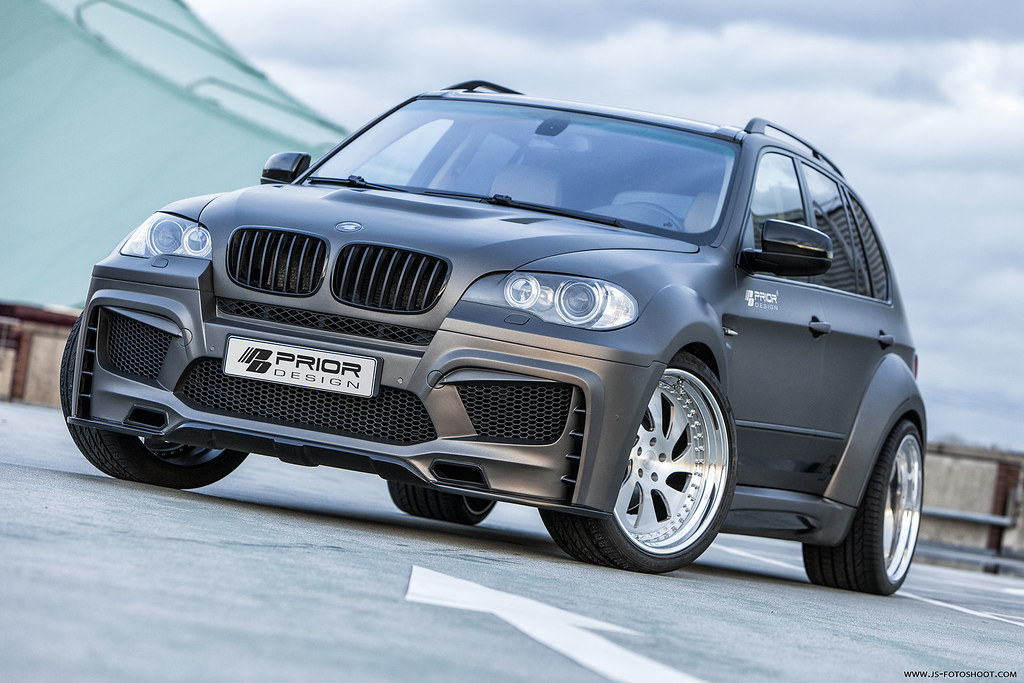
1. **Check the Transmission Fluid Level**: First, park your SUV on level ground and allow the engine to run for several minutes to bring the transmission fluid to its optimal operating temperature. Locate the transmission fluid dipstick, consulting your owner’s manual if necessary, and carefully check both the level and condition of the fluid.
* **What to look for**: A low fluid level indicates a possible leak requiring immediate attention. Brown or black fluid, especially with a sludge-like texture, signals contamination that increases internal friction and causes premature wear; good quality transmission fluid should always be red. The presence of metal flakes in the fluid is a grave sign of severe internal damage.
* **What to do**: If appropriate for your vehicle, add new transmission fluid strictly according to the automaker’s instructions, using only the specified type without substitution. In all cases, consult a professional transmission technician promptly.
* **Note**: Many modern cars feature sealed transmission systems without a user-accessible dipstick. For these vehicles, always consult the owner’s manual and seek professional assistance if you suspect transmission trouble.
Read more about: Decoding Your Drive: 14 Essential Transmission Warning Signs Every Driver Needs to Know

2. **Drive Gently**: If you suspect transmission trouble, it is vital to avoid aggressive driving habits. Refrain from jackrabbit acceleration or hard braking, carry as few people or as little heavy cargo as possible, and under no circumstances should you use the vehicle for towing. The less stress you impose on the transmission, the better, helping to prevent further damage.
Read more about: The Insurance Agent’s Essential Picks: 15 Key Insights for Affordable Car Insurance in Seattle and Washington
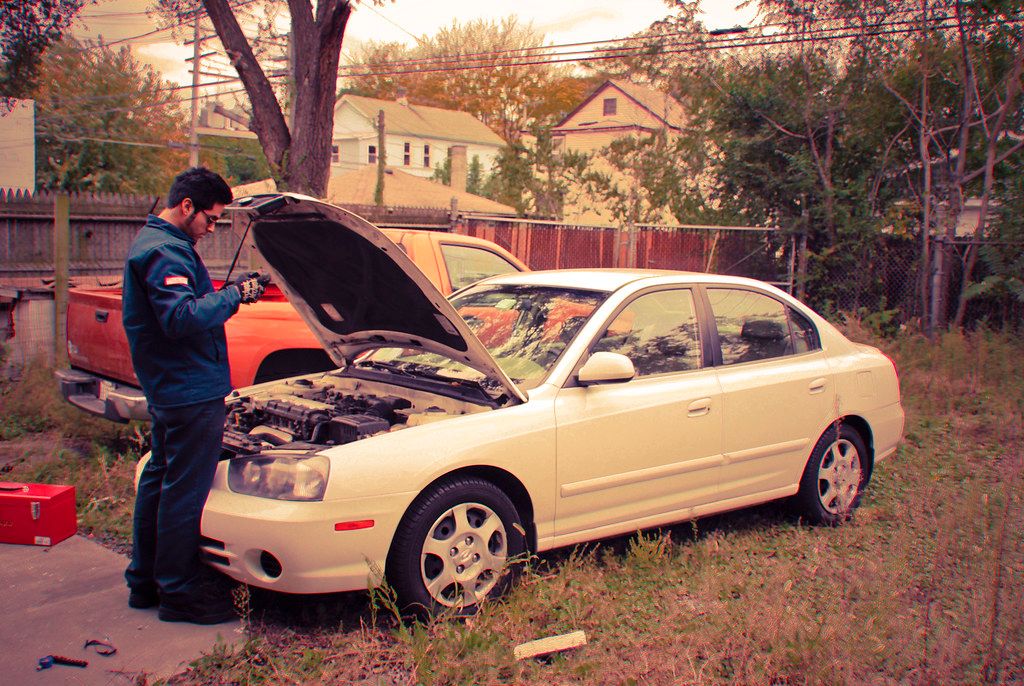
3. **Schedule a Service Visit**: Transmission problems rarely resolve themselves. The most prudent approach is to schedule a diagnostic appointment with an experienced transmission mechanic as soon as physically possible. Be aware that not all repair shops specialize in transmissions, and some often outsource such jobs to specialists. Finding a certified technician or service center with proven experience in transmission diagnostics and repair can expedite the process and potentially save you money by ensuring the right fix from the outset.
Read more about: The Future Is Code: 14 Transformative Automotive Apps Set to Dominate the Next Decade

4. **Take Notes**: Before your visit to the repair shop, meticulously document all observed symptoms and the conditions under which they occurred. The mechanic will require details such as when the problem first manifested, the specific driving conditions present when it was detected, and any progression or worsening of the trouble. This comprehensive information can be invaluable to the technician in accurately diagnosing the issue.
Read more about: Unplugged and Unforgiven: When Musical Titans Declared They’d Never Share a Studio Again
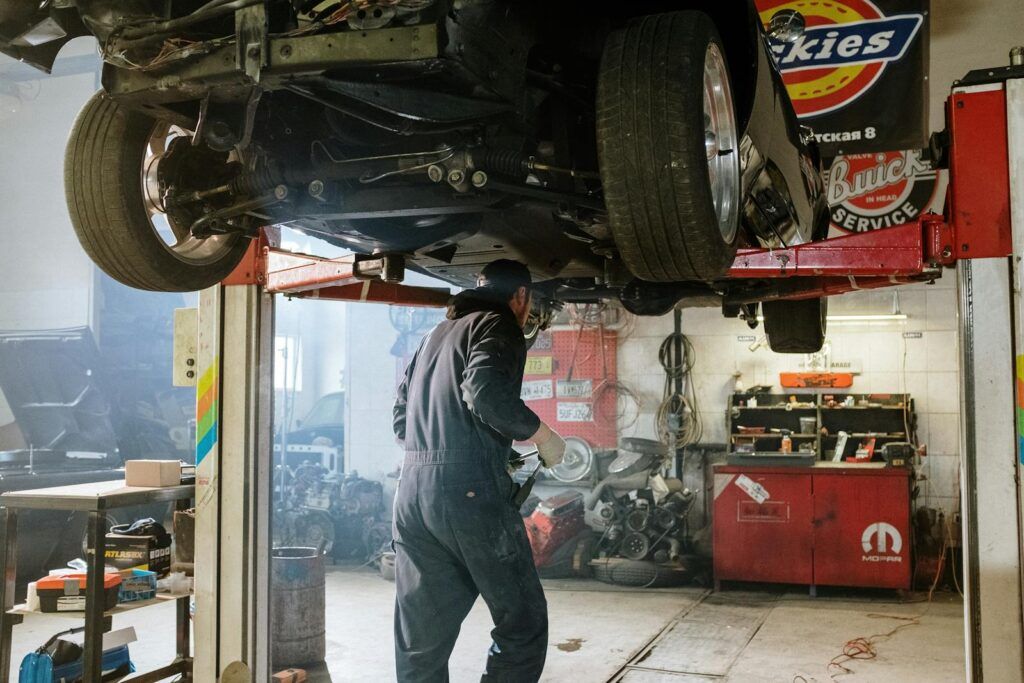
5. **Get a Tow**: Safety should always be your top priority. If you believe transmission functionality is severely compromised or if the vehicle feels unsafe to drive, do not risk driving it to the repair shop. Arranging for a tow is a small price to pay for ensuring your safety and preventing further potential damage to the vehicle.
**How Much Does Transmission Repair or Replacement Really Cost?**
While the prospect of expensive repairs can be daunting, both used and new car owners should understand that transmission problems do not always necessitate replacing the entire unit. Transmissions are complex systems comprising multiple subsystems, any of which can malfunction and require attention. Beyond unexpected repairs, there are also regular, anticipated maintenance expenses to consider. Understanding these costs is part of informed vehicle ownership.
Transmission failure is indeed one of the most expensive and disruptive vehicle repairs, with average costs frequently exceeding $4,700 for major work. However, some common service items and minor repairs can be considerably less. For instance, a transmission fluid change typically ranges from $230 to $287, while a solenoid replacement, such as for an automatic transmission brake shift interlock, might cost between $244 and $307. A comprehensive transmission filter and fluid change can be in the range of $542 to $708. More significant component repairs, like a torque converter replacement, can range from $700 to $850 or higher, depending on the vehicle and labor rates.
**Financial Protection: Exploring Auto Protection Plans**
Given the substantial costs associated with major transmission repairs, it’s wise for consumers to consider options for financial protection. Extended warranties, also widely known as vehicle service contracts, offer a crucial safeguard when the worst happens. These plans can cover the cost of unexpected mechanical breakdowns, including those related to the transmission, long after the manufacturer’s original warranty has expired. Such protection can alleviate the burden of paying thousands out of pocket, providing invaluable peace of mind for long-term vehicle ownership.
Read more about: Tesla’s Strategic Price Adjustments and Their Profound Impact on the Used Car Market
By staying informed about your SUV’s maintenance needs, diligently watching for warning signs, and understanding your options for financial protection, you can significantly enhance your driving experience and safeguard your investment. Choosing a vehicle from our list of reliably engineered SUVs is an excellent first step towards a future of worry-free driving, but ongoing vigilance is key to ensuring that your transmission, the heart of your vehicle’s drive system, continues to perform flawlessly for hundreds of thousands of miles.


